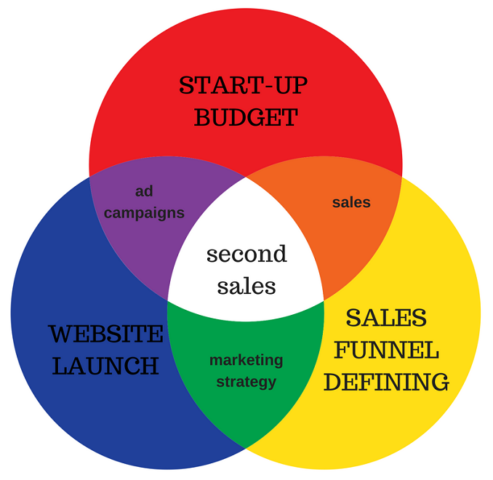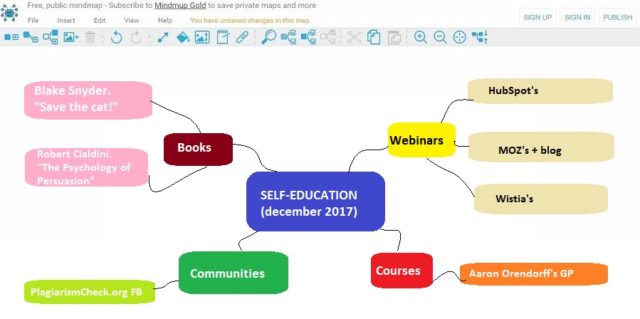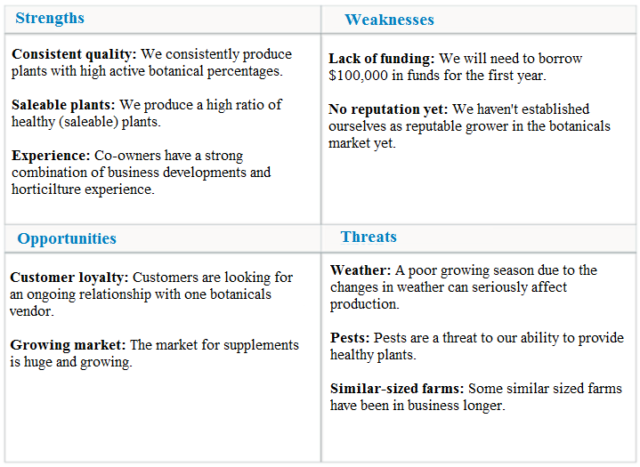Table of contents
“When I don’t have enough money, I sit down to think rather than run to make it. The idea is the most expensive item in the world.”
These words by Steve Jobs reflect top marketing leaders in the best way possible. Rationality, luck, perseverance, and patience are all essential qualities to survive in this brave new world of competition, but they are worthless without a big idea. The ability to find fresh solutions to business problems is what separates first-rate managers from mediocre entrepreneurs.
Often, all you need is to take a seat and let your mind wander. In other words, it’s time to master the art of effective brainstorming for setting growth goals and organizing top-notch marketing campaigns.

Sometimes, the best marketing decision is to sit and have a think
Image source: Pinterest
With hundreds of articles on the topic, some might think they already know everything about brainstorming. But for leaders willing to overtake competitors rather than copy them, it’s crucial to understand the peculiarities of brainstorming that work for marketers and guarantee positive results.
This guide reveals secrets and techniques of effective marketing brainstorming so you can avoid most common mistakes, know how to organize brainstorming sessions in teams, and understand how to choose the best ideas from those brainstormed.
Why is it 7-10-17?
You’ll have got it by the end of this post. (Hint: consider subheadings.)
But first things first:
What is brainstorming in marketing?
Brainstorming is the process of searching for ideas by taking every thought – no matter how awkward it is – into consideration. Some will transform into marketing decisions later, but the primary goal of this process is to go above and beyond the perceived “best practices”.
Why do you need brainstorming? Often, a structured and formal process of decision-making in marketing departments eliminates the work of specialists. New ideas seem irrelevant to a brand message, so leaders approve ordinary and bo-o-oring concepts instead. Brainstorming allows you to mix the experience of all team members and lend a great deal of attention to the idea generation process.

You won’t see a solution if looking in the same direction
Image source: Twisted Sifter
Brainstorming can be group-wide and individual. The latter is often more effective because managers don’t know how to organize the process. And, a group-wide brainstorming allows your team to get involved in business, develop creative thinking, and become more willing to initiate.
So if you want to make the most out of brainstorming sessions and not turn them into pandemonium, remember the following:
7 rules of effective brainstorming
- Get ready. Organize a comfortable workspace so people could feel inspired and motivated to generate marketing ideas for you. We all understand that it would be problematic to stay creative in a room with no chairs or water. Also, consider the psychology of colors, light, and zoning to choose a perfect place that empowers productivity and desire to work.
- Appoint a secretary who will write down all ideas on a board or flip charts.
- In case your employees haven’t worked in teams before, organize a warm-up: introduce them to each other, discuss project insights transformed from GitHub, or melt the ice by sharing a funny version of your planning.
- Pinpoint a problem. Even if you think they all know it, go into detail describing the goal of this meeting.

- Don’t push. Give your team some time to organize thoughts and generate ideas for you.
- Encourage each member of your brainstorming group.
- Don’t gather more than ten people at a time. It’s not effective.
17 brainstorming techniques for ingenious decisions
The #1 mistake of most marketers during brainstorming:
They want to cover the whole ground at once. Sure, there are a million ways – right and wrong, earth and cosmic, stupid and genius – to find solutions to a problem; but if you try to embrace and analyze them all, you risk to go out of mind or slip to a well-trodden path: your old attitude toward business decisions.
To avoid that, assign a target and position your brainstorming session accordingly. The following techniques will help:
PRO TIP: Get a Live Overview of Your Most Important Projects In a Single Dashboard
Project management is all about juggling: resources, expectations, people, data, and much more. And as a project manager, you not only have to know where your projects are at any given moment, but you also have to be aware of where they’re going and where they need to be in the future. To do that using a project management system, you need an actionable dashboard that allows you to monitor metrics like:
- Number of tasks completed by project. Get a live update on the total number of tasks that have been completed in a particular project and track how many tasks actually get completed on a daily basis.
- Total hours tracked. See how many hours are tracked on a monthly, quarterly and yearly basis. Split tracked time by project, client, tasks, and team.
- Tasks overdue by project. At any time, see how many project tasks are overdue, and take appropriate action to get them back on track.
- Tasks completed by project. At any time, see how many tasks have been completed in a project and how many tasks remain to be completed.
Now you can benefit from the experience of our project managers, who have put together great plug-and-play Databox templates showing the most important KPIs for tracking your team’s performance. It’s simple to implement and start using as a standalone dashboard or in management reports!
You can easily set it up in just a few clicks – no coding required.
To set up the dashboard, follow these 3 simple steps:
Step 1: Get the template
Step 2: Connect your project management tool with Databox.
Step 3: Watch your dashboard populate in seconds.
1. Travel in time
Imagine you need to solve a problem appeared 10, 100, or even 1,000 years ago. What would you do during Holy Inquisition, and what decisions would you make? Or, let’s say you are in a post-apocalyptic world of 2201: any ideas?
2. Teleport
Try taking a look at your marketing problem as if it found you in a different country, climate, or planet. How would you regulate it?
3. Reshape yourself
Become 10 years older or 50 kilos heavier. Ask your team to reshape some characteristics in their mind’s eye: nationality, race, or a madness level. It will unveil a spectrum of decisions our subconsciousness hides, allowing us to come up with truly creative ideas for your marketing campaigns.
4. Assume different roles
Take the place of your father, best friend, or enemy. What would they do? Imagine yourself Einstein or Tesla: how would they solve this problem? Alternative variant: your team members “turn” into Hulk, Superman, Mickey Mouse, or any other fiction characters; encourage them to share ideas on behalf of the roles they play.
5. Feel the gaps
Here’s your starting point – a marketing problem you have at the moment. And here’s your final destination – a goal you want to move towards. Just start feeling the gaps between these two points step by step. For instance, the shortest way of turning your hobby into business could look like this:

Certainly, you would have more gaps in such schemes because each gap snowballs hundreds of complementary ones; your task is to consider and resolve them all.
6. Spy
A competitor analysis is a must-have for marketers willing to strengthen their techniques for more traffic and leads. It helps to compete for link building strategies and content ideas to overtake opponents online. However, spying on competitors may hurt you if done wrong, and it would be far from effective brainstorming to steal others’ ideas for own marketing decisions.
And yet, why not take a look at other niches? For instance, you sell building equipment and want to attract subscribers to your Facebook business page. Chances are that your competitor’s unhumorous articles describe all features of their product, but you might take a different tack: target the same audience with alternative content – jokes and memes about builders. Brainstorming in this direction will help to generate more ideas and engage more people in the discussion.
7. Switch brains
When brainstorming in a group, ask members to write down their ideas and questions. Then, exchange writings and come up with alternative ideas based on those given by your co-workers. It’s a great technique to break traditional in-order brainwork.
8. Choose the best ideas
Just give your team a task to come up with as many ideas as possible, choose the most appropriate ones, and then try to generate even more ideas based on those approved. Keep on brainstorming like that until you find the ideal solution.
9. Build mind maps
A mind map is a diagram connecting information around a central subject. It reminds a tree or a spider, allowing you to capture thoughts, bring them to life in visual form, and solve marketing problems more effectively. Created by international speaker Tony Buzan, this technique works for brainstorming, organizing, managing, teaching, communicating information, and much more.
Tools like MindMeister, XMind, MindMup,Weje and others will help you create beautiful mind maps to share with team members for further analysis.

10. Search for help
Imagine all powers striking for you, as well as those preventing you from success. Start brainstorming on how to enhance the positive factors and keep negative ones to a minimum. In other words, think about components rather than your central idea itself.
11. Don’t stop
Make it a goal to brainstorm until you have 101 ideas in the pocket. Or, set time limits for coming up with 101 marketing decisions.
12. Play sports
Do you know that physical exercises stimulate endorphins secretion and make your brain work best? When you get off the subject for an hour – your subconsciousness enters a room so you could change the perspective and think of the problem with a clear head. Your gym is the place where “Eureka!” moments may strike you.
13. Conduct a SWOT Analysis
SWOT is a technique for understanding all Strengths and Weaknesses of your business, and for identifying both Opportunities and Threats you face. Brainstorming with SWOT will allow you to concentrate on details claiming attention for better marketing results and, therefore, avoid worrying about anything and everything.
Here’s an example of SWOT analysis for Botanical Bounty that will inspire and help you conduct own:

Image source: Bplans
14. Criticize
Question the assumptions surrounding your problematic issue. For instance, let’s say you need to come up with a topic for your next long read at the Databox blog. Why do you need to publish it on this particular blog? Or, what makes you think you need a long read rather than a series of blog posts?
Sometimes your initial marketing goal might be wrong. Make sure you don’t try to brainstorm solutions for waste problems.
15. Don’t limit yourself to resources
Imagine that you have unlimited resources to deal with the task. What would you do if got a never-ending budget or time? Let “the sky is the limit” be your motto at every brainstorming session, and the results of this technique will surprise you.
16. Consider a random factor
Choose a random word or image related to your niche and use it as a base for all ideas that strike your team members during brainstorming sessions. It’s a kind of like a matrix allowing you to generate content ideas and plans for marketing campaigns.

Image source: Orbitmedia
17. Exaggerate
What will happen if your marketing problem swells to larger-than-life sizes? And what if you have 10 of the same problems all in one? How would you solve it? Or, you can diminish the goal of your brainstorming a little: doesn’t it become easier to find a solution to a smaller problem?
Sure, there’s no need to use all 17 brainstorming techniques at once. Just keep them in mind and choose those fitting your project and marketing goals best.
10 mistakes you often don’t notice while brainstorming
- Your brainstorming session doesn’t have a topic. Blanket claims a la “Okay, give me ideas that come to your mind” will never bring results.
- Your team members have no motivation to create anything outstanding or remarkable.
- Your brainstorming team doesn’t have enough problem-solving skills.
- All team members are clones. What’s the point in searching for enlightenment among ten marketers with alike mindsets? Invite a designer, a copywriter, or a software engineer to your brainstorming session – and results might surprise you.
- Your team takes coffee breaks too often.
- You stubbornly choose ideas that used to work back in the old days, nipping out-of-the-box solutions in the bud.
- You are hyper-serious during a brainstorming session.
- You don’t give colleagues enough time to think, crying for decisions right here, right now.
- Your brainstorming team involves representatives of competitive departments, and decisions made by one might make things difficult for others.
- You are too quick to approve ideas from those brainstormed.
And now, for the most interesting part:
Based on the above, how to choose the best idea?
You’ll have tons of ideas and marketing decisions after the brainstorming session is finished. Now it’s time to regiment and sort them out. To make this process productive, answer six questions:
- How soon can you implement it?
- What will be the outcome?
- Is it easy to put into practice?
- Is it expensive?
- Is it risky?
- What does your gut feeling say?
Organize all ideas accordingly. You might want to use this kind of charts to sort out the results of your brainstorming session:

Or, ask each team member to choose (anonymously) the top five ideas. This will take individual brainstorming out of play, and you will be able to analyze the most popular ideas and decide on the most effective ones for your marketing campaign.
The ball is in your court now!
What brainstorming technique do you use to set business goals and make marketing decisions? Does it help you manage campaigns in a worthwhile manner?















